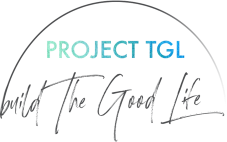Today I want to talk about how to practise gratitude. I want to talk about why you might want to practise gratitude. I want to talk about the limitations of the practice. And I want to talk about how to practise gratitude: what are the actual steps you need to take?
Why would you want to practise gratitude?
Firstly, why would you want to practise something like gratitude? It sounds like a kind of hokey thing to do.
Well, it turns out that there’s something called the hedonic treadmill. What the hedonic treadmill does is it makes us get used to whatever is happening to us. So when we go through difficult times, the hedonic treadmill is actually really helpful, because unless we become clinically depressed or anxious, when we go through difficult times, we have a bit of a slump in terms of our happiness, and then over time, it starts going back up again, to our average levels, even if nothing really changes. So the hedonic treadmill helps you feel okay when you go through difficult times. Of course, you feel pretty crappy for for a while, but it helps you return back to your average happiness levels over time.
The hedonic treadmill is not so helpful, though, when it comes to positive life events. Because we tend to have a boost in our happiness where we go, “Yay, this wonderful thing has happened.” But again, over time, we start going back down to our average happiness levels, and the novelty of the positive event wears off. And even if the positive effects still continue our life, we stop appreciating it quite so much.
A practice of gratitude can be helpful, because you’re teaching yourself to notice and savour the good things in life, which helps you to beat the hedonic treadmill.
How it works
The way that it works is that when you consciously practise sitting down and noticing the good things, over time, your brain starts to notice the good things more and more often, even when you’re not consciously trying to practise gratitude.
It works a little bit like a video game. Recently, I have been playing Skyrim. I’m not usually super into gaming, but it’s a game that I started and never finished, and it’s always nagged at me. So I’ve gotten back into it recently, because I want to finish the main storyline. In that game, you can collect things from the environment, things like flowers, and berries on bushes, and you can make potions out of them.
Over time, what’s happening is that in my normal 3D, everyday life, when I go for a walk outside, when I see certain colours and shapes of flowers, or berries on bushes, my brain goes: “Oh, I should collect that. Because I could use that to make a potion!”
Gratitude is actually a lot like that. When you train your brain to notice and collect enjoyment of the good things, it starts happening even when you’re not trying.
So that’s why you might want to practise gratitude.
The limitations of gratitude
I do want to say something really important, though, about the limitations of the practice. Just like any other self development practice, if you have mental health problems, such as depression or anxiety, gratitude can be a useful tool in the toolkit, but it is never any substitute for professional help.
I have a sleep disorder, I got professional help for my sleep disorder. I still do therapeutic practices that I developed with a professional, every single day of my life. I would never ever claim that mindfulness, or positive affirmations, or gratitude or any other self development practice by itself is enough in those kinds of situations. There’s no substitute for professional help.
How not to practise gratitude
There’s a few different ways that different people recommend practising gratitude. A lot of them are actually not quite as helpful as people seem to think.
One of the mistakes that people make when they suggest a gratitude practice, is they suggest journaling at length about things that you are grateful about. This is actually not as helpful as it might sound. Because it turns out when we write about something at length, that tends to take the emotional edge off. Now, this is useful when it comes to difficult or traumatic events. But it’s not so useful for positive events where we want to retain that emotional edge of the joy that it brought us.
Another recommendation that people make is to do a practice called three good things, which I do highly recommend. It’s where you write down three good things, and you just jot them down really quickly, it takes two to five minutes to do just depends how long it takes you to think of three good things. But the mistake that people make is they recommend doing three good things every single day. Now, the research actually says that this is not the best way to do it. Because it turns out that when we do it every single day, the hedonic treadmill kicks in. It stops feeling quite so interesting and novel, your brain tunes out, and it stops really savouring and appreciating those good things.
How to do “three good things” effectively
Instead, what I would recommend with the three good things practice, is start off doing it every day for just a week or two weeks, just to get used to what it feels like to do it. And then after two weeks drop back to doing it just once a week.
It turns out that research shows that when we do something about once a week, it continues to have those positive benefits because it keeps feeling novel, and the hedonic treadmill doesn’t kick in. So start off by doing it every day for a week or two weeks, and then drop back to just once a week.
The great thing about this is it only takes two minutes to do the three good things practice. And if you only do it once a week, you’re only committing two minutes a week! As far as I know, that’s probably about the smallest amount of time you could commit to make a meaningful difference to how it feels to be walking around in your day to day life.
The other thing that I would recommend for a really positive three good things practice is to make sure that the things that you’re jotting down every time are different. Don’t just write down the same three good things because your brain will tune out, it’ll glaze over, it won’t find that interesting. Try to find something different every time. Because the benefit of the practice comes from scanning your environment and trying to consciously notice new good things that you haven’t noticed before. That’s the part that’s training your brain to notice those in your everyday life.
Also, make sure that at least one of the things, preferably all three is something really, really small. We tend to notice the big important things anyway and appreciate them. But we’re less good at noticing the small, everyday tiny things that improve the quality of our lives. Things like the quality of sunlight as it filters through your window, or the taste of your peppermint tea as you drink it. When you train yourself to notice and really appreciate those things, that’s where you get the kind of biggest bang for your buck, or in this case, your minutes that you invest into the practice.
What gratitude has done for me
Personally, I feel that over the last five years that I’ve been doing a gratitude practice, it has over time changed me from having a slight negativity bias in the things that I noticed in my everyday environment, to having a slight positivity bias in the things that I notice.
I’m just a bit more likely now to notice and appreciate the lovely small, good things. And who wouldn’t want that?
It doesn’t have the same effect for everyone, but research does show that for most people, it has some small but meaningful, positive effect.




